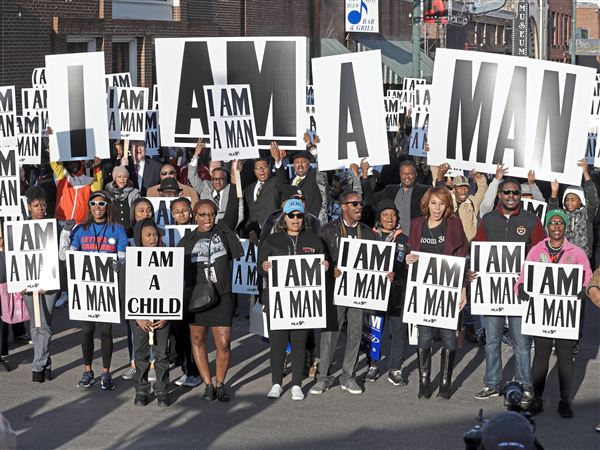How typical -- no, stereotypical -- of your generation could you possibly be? When I read "The Catcher in the Rye" at age 15 in 1963, I wrote J.D. Salinger a fervent letter, c/o his paperback publisher Signet, proposing and outlining a movie version -- starring myself. I was convinced that (1) the idea was original and (2) he'd love it.
Sadly, his reply to me got lost in the mail.
Come to find out in "Salinger," the much hyped and anticipated documentary, that Billy Wilder, Elia Kazan, Jerry Lewis and perhaps 1,000 others proposed such a film before and after me. Small consolation that his replies to them got lost in the mail, too.
- Rating:
PG-13 for disturbing war images, thematic elements and smoking.
Directed by Shane Salerno, this documentary accompanies his and David Shields' new biography of The Great Recluse. Philip Seymour Hoffman, Martin Sheen, Tom Wolfe, Gore Vidal and John Guare are among those weighing in on Salinger and his impact. But the breathless wait for hype to be fulfilled and secrets to be revealed results in something like the search for WMD in Iraq: a letdown.
Is art biographical? Yes and no. How much does it matter, in the end, whether a great novel's characters and events were experienced or invented by the writer?
At 27, Salinger spent a harrowing 299 straight days at war (carrying a draft of the first "Catcher" chapters with him) from the D-Day landing on Utah Beach through the brutal village-by-village fighting in Normandy to the liberation of Kaufering IV concentration camp near Dachau in 1945. He rarely spoke and never wrote about the horrors he saw there. But how could they not have shaken, and shaped, his literary soul?
The shell-shocked voice of Holden Caulfield, a prep school boy desperate to recapture his lost innocence, was rejected first by the New Yorker (due to "writer-consciousness"), then by Harcourt Brace (worried that all Holden's goddams and hells might "kill our school division business"), then finally published by Little Brown on the understanding that Salinger would do no publicity for it and be sent no reviews.
The rest, as they say -- 65 million copies later -- is history.
After "Nine Stories," "Franny and Zooey," and "Raise High the Roofbeam" came a final New Yorker piece in 1965 -- followed by half a century of silence. "There's a stillness that comes from not publishing," he said.
Hiding himself and his prose from the public eye, of course, did more to make people chase him and invade his privacy than anything else. If he'd given an interview or two -- what the public wanted once or twice -- he might have averted the invasions. Or was it a game that he perversely enjoyed?
Mr. Salerno's film explores that key professional issue, as well as the private one of his semi-platonic love affairs with young women. Extremely young. There's mysterious first wife Sylvie (with whom he had "telepathic communication"). There's fickle, faithless Oona O'Neill, who forsook him for Charlie Chaplin -- another older man with pedophilic tendencies. There's 14-year-old Jean Miller (the inspiration for "Esme With Love and Squalor"), who brought him out of his postwar melancholy.
Above all, there's Joyce Maynard -- the film's one great interview subject. When The New York Times Magazine published her "An Eighteen Year Old Looks Back on Life" in 1972 with an alluring cover photo of the bright, doe-eyed beauty, it prompted a letter from Salinger, then 53, praising her writing and warning her of the dangers of publicity. She dropped out of Yale to live with him in Cornish, N.H., for a year during which she finished her first book while eating Birds Eye frozen vegetables, watching old movies, dancing to Lawrence Welk and meditating with him. He ended their relationship abruptly. She sold his two dozen letters to her at auction for $156,500 in 1999.
If the main reason anyone writes a book is to have it successfully published and then commune with his readers, Salinger categorically rejected that idea -- especially the unwritten contract granting readers the right to inquire into the author's and the book's private inner life. He seems, like Emily Dickinson, to have written only to make sense of things for himself -- not for any readers.
This overproduced but engrossing film features great World War II footage -- too much of it, with excessively repeated images -- and an important, if truncated, segment about the sick fan fanaticism for "Catcher" that produced assassins Mark Chapman and John Hinckley. But at 129 minutes in length, it's about half an hour too long, overembellished with melodramatic sound effects, slick visuals, tacky "dramatizations" and soaring music to rival the "Ben-Hur" score. Needless to say, Salinger would hate it, for exposing his war traumas and sexual anxieties, but mostly for its bombastic vulgarity.
In the end, he was important -- but not the immortal genius comparable to Shakespeare or Beethoven that Mr. Salerno makes him out to be. If he'd really wanted to keep his post-'65 writings forever secret from publication, he would have burned them the way Gogol (et al. mad perfectionists) did, and not left them in a safe for post-mortem discovery the way Hemingway (et al. sad egotists) did.
He may be more prolific dead than alive. "Salinger's" most fascinating revelation comes in an epilogue claiming that five new books/story collections from the last half of his life will be published between 2015-2020, including a complete genealogical chronicle of the Glass family and several new Seymour stories, one of which deals with his life after death! Mr. Salerno predicts these posthumous works will be "the masterworks for which he is ever known."
That's one possibility. The other is that, after all the hype, they'll open the safe and find 1,000 pages saying, "All work and no play makes Jerry a dull boy."
Opens today at the Manor Theater, Squirrel Hill.
First Published: September 20, 2013, 8:00 a.m.


















